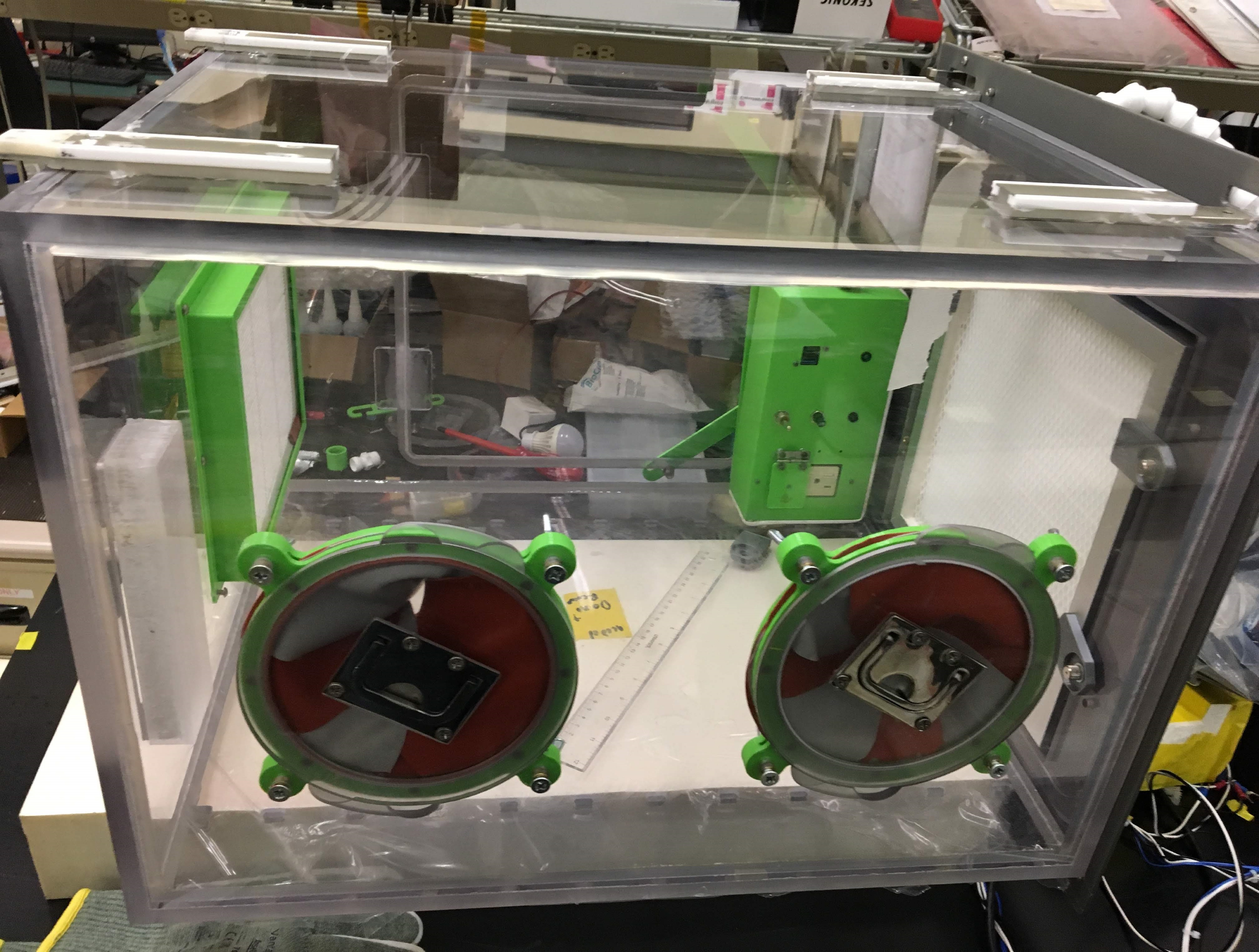Search
Health Medicine and Biotechnology

Portable Science Enclosure Features Unique Innovations
In the development of this technology for the ISS, engineers had to pay careful attention to electrical draw efficiency, ease-of-use, mass reduction, production cost, and safety, as conducting scientific research under spacecraft stressors is an important requirement.
To create a controlled environment within the science enclosure, engineers designed a ventilation system incorporating an external fan/blower that pulls air across a HEPA filter and diffuses it in a manner that creates an even laminar flow within the enclosure before exiting through the exhaust filter.
The glove seal forms an airtight and liquid impervious seal. This novel design also allows the user flexibility to choose their own task-specific glove material, facilitates easy tool-free assembly and quick glove changes, and may be transferable to other types of enclosures. Another key feature is that a through-port can be quickly fitted to an empty glove port.
Due to the science enclosure system intended application aboard the ISS, its electrical draw does not exceed 24V, thereby making it feasible to power it from a battery for terrestrial field use or other applications where accessing power is a challenge. The combination of its performance, portability, BSL 2 capability, and inexpensive production costs could position the science enclosure system and accompanying innovations to be valuable in the fields of education, research, clean rooms, hospitals, and disaster relief efforts.



